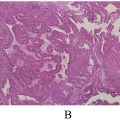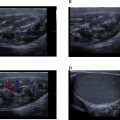Abstract
Epidermoid cysts are rare intracranial lesions comprising approximately 1% of all brain tumors, with petrous apex involvement accounting for 4%-9% of cases. These congenital lesions arise from ectodermal remnants during neural tube closure, while acquired cases may result from trauma or chronic middle ear pathology. Clinical presentation is variable and depends on the lesion’s location and impact on surrounding neurovascular structures, with cranial nerve dysfunction being the most common symptom. Imaging plays a crucial role in diagnosis, with diffusion-weighted MRI distinguishing epidermoid cysts from other lesions such as arachnoid cysts and cholesterol granulomas. Management remains challenging due to their proximity to critical structures; complete surgical excision minimizes recurrence but may increase morbidity, while subtotal resection requires long-term follow-up. We report the case of a 40-year-old female patient who presented with a history of progressive hearing loss and facial paralysis, in whom an epidermoid cyst of the petrous apex was diagnosed.
Introduction
Epidermoid cysts are rare intracranial tumors, comprising 1% of cases, with 4%-9% occurring in the petrous apex. These lesions, histologically identical to middle ear cholesteatomas, arise either from congenital ectodermal remnants during neural tube closure or as acquired lesions eroding medially through the otic capsule. Their clinical presentation varies, commonly involving cranial nerve dysfunction due to their proximity to critical neurovascular structures. Management is complex, as complete surgical excision minimizes recurrence but poses risks due to dense adherence to vital tissues. Subtotal excision may reduce morbidity, though it requires careful long-term monitoring for recurrence [ , ].
Case report
We report the case of a 40-year-old woman with no prior medical history of recurrent otitis, who presented with progressive left-sided hearing loss, tinnitus, and left facial paralysis persisting over a five-year period without seeking medical consultation.
A computed tomography (CT) scan revealed an expansile, hypodense, soft tissue mass at the left petrous apex with scalloped bony edges and no contrast enhancement ( Fig. 1 ). Magnetic resonance imaging (MRI) further characterized the lesion as an expansile mass at the left petrous apex, demonstrating T1 hypointensity, T2 hyperintensity, and mild peripheral enhancement with diffusion restriction. The mass exerted a slight mass effect on the ipsilateral temporal lobe and the left Meckel’s cave. These imaging findings were consistent with a diagnosis of an epidermoid cyst of the left petrous apex ( Figs. 2 , 3 , and 4 ).



Stay updated, free articles. Join our Telegram channel

Full access? Get Clinical Tree








